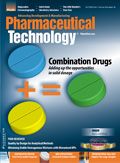Tools in Waiting: Time for Evolutionary Operation
Real-time experimentation may offer continuous process improvement.
Since the mid to late 1800s, statisticians and mathematicians have been developing increasingly useful statistical tools and statistical theory. Statisticians and nonstatisticians alike have readily adopted some of these tools and theories. Exploratory data analysis (EDA), for example, was quickly accepted within and outside the field of statistics (1). Other tools languish forgotten for years and even decades before being accepted by mainstream users. An example is the Plackett-Berman designed approach to experimentation. Published in 1946, the experiments were not appreciated and used until the early 1980s (2).

Lynn D. Torbeck
Evolutionary operation
Another valuable tool that has yet to gain wide acceptance is an optimization technique known as evolutionary operation (EVOP) (3). EVOP is experimentation done in real time on the manufacturing process itself. Small changes are made to the current process, and a large amount of data is taken and analyzed. The changes are small enough that the process still makes acceptable products and remains in a state of control. The small changes are compensated by the large amount of data collected. The designs are simple factorials which, when analyzed, direct the process to a new point of operation that is more optimal for the critical quality attributes. This process is repeated until no further optimization is achieved. Also, for processes that vary with input materials and environment, it is possible to track and maintain optimality over time. This achievement is the ultimate in continuous improvement philosophy.
George Box and Normal Draper, both highly regarded and pragmatic statisticians, stated the goal in the preface of Evolutionary Operation. "What originally motivated the introduction of EVOP, however, was the idea that the widespread and daily use of simple statistical design and analysis during routine production by process operatives themselves could reap enormous additional rewards" (4). And it should be said that there would be an increase in quality as well.
Why was this theory not wildly and immediately accepted in the 1970s? Companies had often spent years working to make their processes achieve a certain level of performance. Even if that level of performance was poor, management was not going to let anyone, particularly floor operators, start experimenting with an accepted process.
Are we still at that point today? Yes, but changes in the industry and at FDA may make EVOP a tool whose time has come. The combined intersections of process analytical technology (PAT), risk analysis, quality by design (QbD), the ICH troika of Q8, Q9, and Q10, and the strong emphasis of continuous improvement may provide a window of opportunity.
Additional tools
The designs in Box and Draper are based on full and fractional factorials. A further discussion with an extensive example can be found in chapter 15 of Box, Hunter, and Hunter (5).
A second design approach uses a simplex or triangle as the basis of the data collection. (See reference 6 for a full textbook presentation.)
Finally, Charles Hendrix states, "Another popular method of optimization works very much like a game of leapfrog. It begins with a patterned set of experiments in all of the interesting variables. (For example, an eight-run Placket Burman or fractional factorial with seven factors.) The pattern is a triangle in two variables, a tetrahedron in three variables, or a simplex (i.e., a multidimensional triangle) in four or more variables. When this pattern of experiments has been run, the experiment that gave the worst result is identified. This experiment is then discarded and replaced by a new experiment according to a definite rule. When the replacement experiment has been run, the worst of the set is again identified and discarded. This continues until no further improvement is observed. This method is called ... self directed optimization, or just SDO" (7).
Has EVOP's time arrived? The potential is enormous and worth a serious investigation.
Lynn D. Torbeck is a statistician at PharmStat Consulting, 2000 Dempster, Evanston, IL 60202, tel. 847.424.1314, LDTorbeck@PharmStat.com, www.PharmStat.com.
References
1. J.W. Tukey, Exploratory Data Analysis (Addison-Wesley, Reading, PA 1977).
2. R. L. Plackett and J. P. Berman, "The Design of Optimum Multifactorial Experiments," Biometrika, 33, 305 (1946).
3. G.E. Box, "Evolutionary Operation: A Method for Increasing Industrial Productivity," Applied Statistics, 6, 16-60 (1957).
4. G.E. Box and N. R. Draper, Evolutionary Operation (John Wiley and Sons, New York, NY 1969).
5. G.E. Box, J. S. Hunter and W. G. Hunter, Statistics for Experimenters, Second Edition (John Wiley and Sons, New York, NY, 2005).
6. F.H. Walters, et al., Sequential Simplex Optimization (CRC Press, Boca Raton, FL 1991).
7. C. Hendrix, "Through the Response Surface with Test Tube and Pipe Wrench," CHEMTECH, 488-497 (August 1980).
